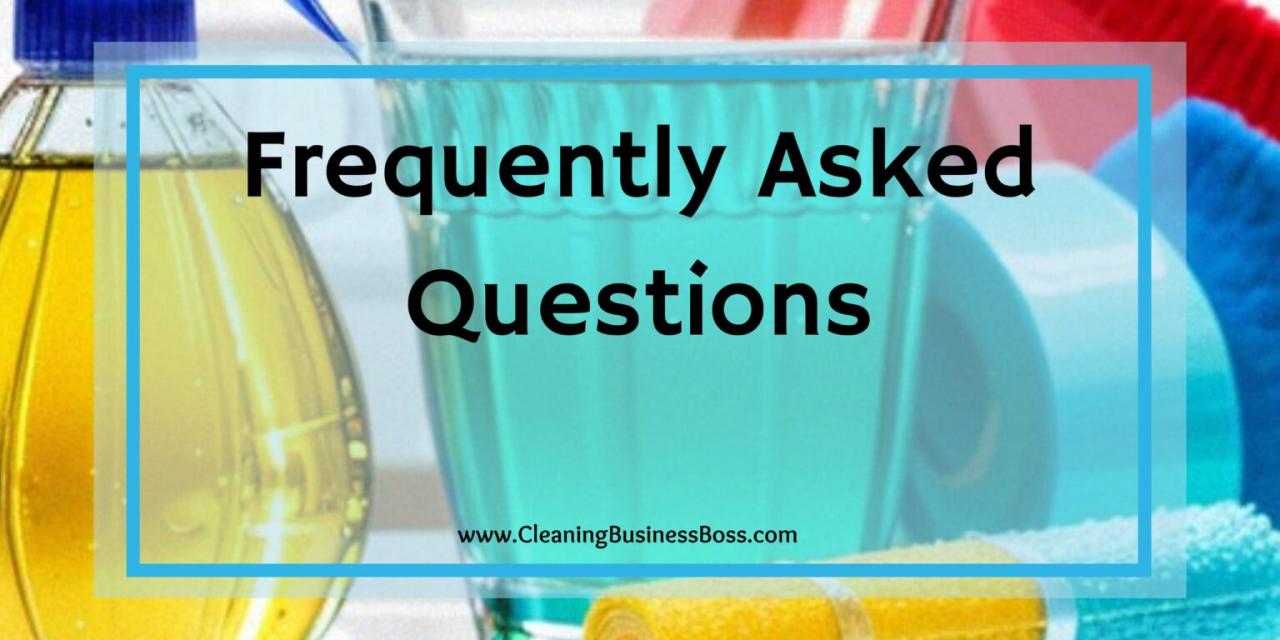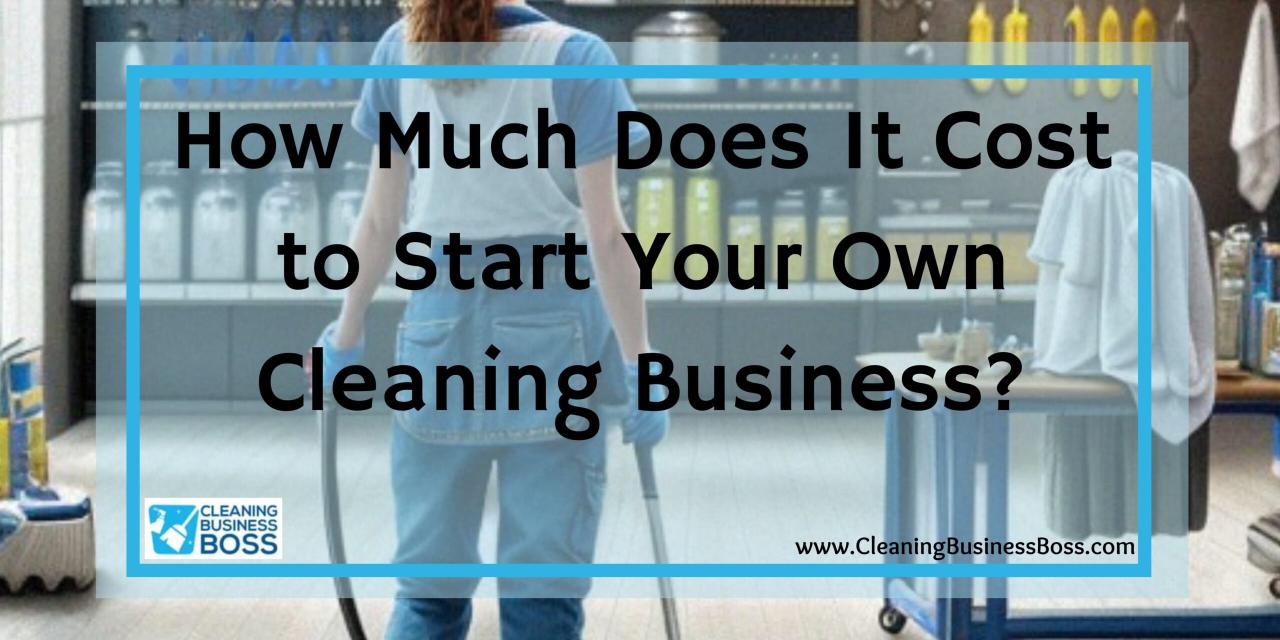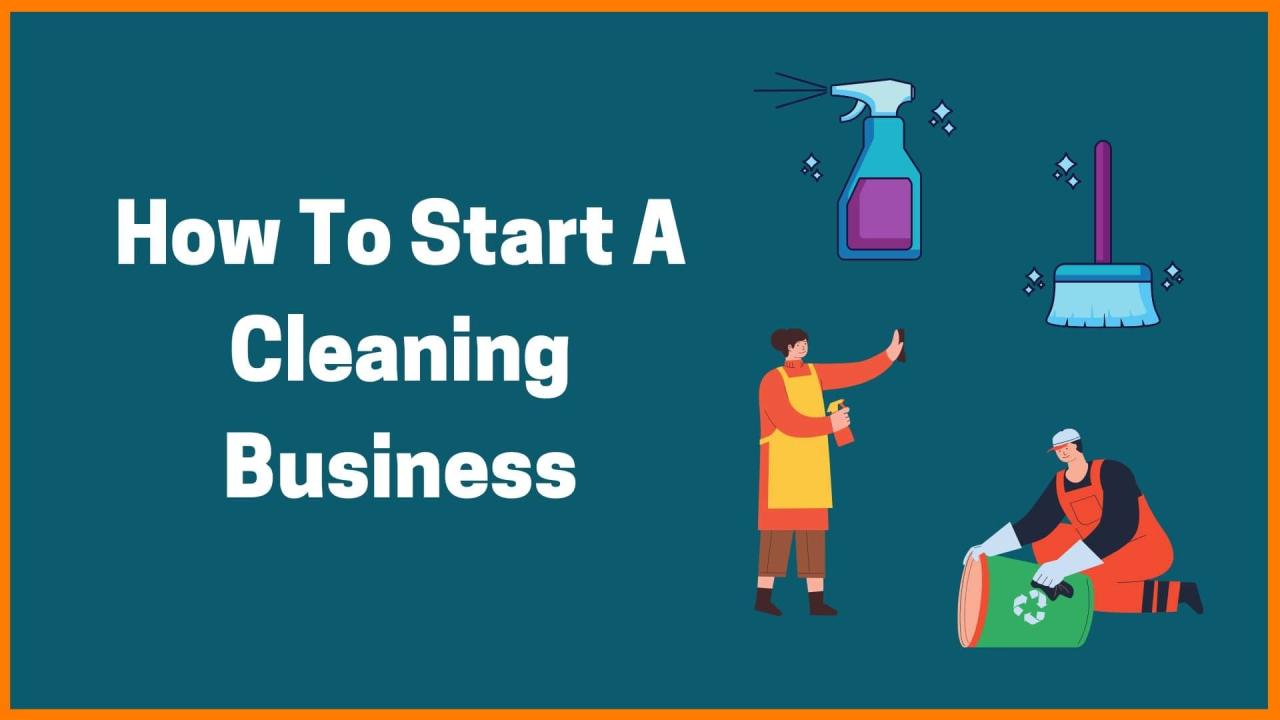How much would it cost to start a cleaning business? This question is crucial for aspiring entrepreneurs eager to enter the lucrative cleaning industry. Launching a cleaning business requires careful planning and budgeting, encompassing initial investments in equipment and licenses, ongoing operational expenses, and a well-defined pricing strategy to ensure profitability. Understanding these key financial aspects is essential for success.
This guide will break down the costs involved, from the initial investment in cleaning supplies and vehicles to ongoing expenses like marketing and insurance. We’ll explore various pricing models, helping you determine a profitable service fee structure. Finally, we’ll discuss crucial aspects like marketing, client acquisition, and legal considerations to help you build a thriving cleaning business.
Startup Costs: How Much Would It Cost To Start A Cleaning Business

Starting a cleaning business requires careful planning and budgeting. Understanding the initial investment needed is crucial for success. This section details the various costs involved in launching your cleaning enterprise, from equipment purchases to licensing fees. A realistic budget will help you secure funding and manage your finances effectively.
Initial Investment Breakdown
The initial investment for a cleaning business will vary depending on the scale of operations and the services offered. However, a comprehensive breakdown of typical startup costs is presented below. This table provides a sample estimate; actual costs may vary based on location and specific choices.
| Item | Quantity | Unit Cost | Total Cost |
|---|---|---|---|
| Vacuum Cleaners (upright and handheld) | 2 | $200 | $400 |
| Mops (various types) | 5 | $15 | $75 |
| Cleaning Solutions (all-purpose cleaner, glass cleaner, disinfectant) | 5 gallons | $20/gallon | $100 |
| Buckets | 3 | $10 | $30 |
| Microfiber Cloths | 2 dozen | $10/dozen | $20 |
| Gloves (rubber and nitrile) | 2 boxes | $15/box | $30 |
| Cleaning Caddy | 1 | $25 | $25 |
| Vehicle (used car purchase or lease) | 1 | $5,000 (used) / $300/month (lease) | $5,000/$3600 (annual lease) |
| Vehicle Insurance | 1 year | $1,200 | $1,200 |
| Fuel (estimated annual) | 1 year | $1,000 | $1,000 |
| Business Licenses and Permits | varies | $100 – $500 | $200 (estimate) |
| Marketing and Advertising (initial) | 1 month | $200 | $200 |
| Cleaning Supplies (ongoing) | 3 months | $200 | $600 |
| Total Estimated Startup Costs | $8,150 – $11,750 (including annual lease) |
Affordable Equipment Options
For a budget-conscious startup, consider purchasing used equipment from online marketplaces or thrift stores. Look for reputable brands offering warranties or guarantees. Investing in durable, high-quality microfiber cloths can reduce the need for frequent replacements. Similarly, opting for concentrated cleaning solutions allows for dilution, thus extending their lifespan and lowering overall costs. Consider purchasing a combination vacuum cleaner that has both upright and handheld functionality, rather than purchasing both separately.
Licensing and Permit Costs
The costs associated with obtaining necessary licenses and permits will vary significantly depending on location (city, county, state). These costs can include business registration fees, local business licenses, and potentially specialized permits for handling hazardous materials if you plan on offering specific cleaning services. It is crucial to research the specific requirements for your area well in advance of starting operations. Contact your local government agencies (city hall, county clerk’s office, state licensing board) to determine exact costs and requirements. Failure to obtain the necessary permits could result in significant fines or even business closure.
Sample Budget
This sample budget demonstrates a potential initial investment required to start a small-scale residential cleaning business. Remember to adjust the figures based on your specific circumstances and location.
A realistic budget is crucial for success. Underestimating costs can lead to financial difficulties early on.
Recurring Expenses

Successfully launching a cleaning business requires careful consideration of not only initial startup costs but also the ongoing operational expenses that contribute significantly to its long-term viability. Understanding and managing these recurring costs is crucial for profitability and sustainable growth. This section details the key ongoing expenses and strategies for effective cost management.
Recurring expenses represent the consistent financial outlays necessary to keep your cleaning business operational. These costs are incurred regularly, month after month, and accurate budgeting for them is essential for maintaining a healthy financial position and avoiding unexpected financial shortfalls. Failing to account for these expenses can lead to significant financial strain and even business failure.
Recurring Expense Categories
Several key expense categories contribute to the overall recurring costs of a cleaning business. Effective budgeting requires a thorough understanding of each category and the factors that influence their magnitude.
- Cleaning Supplies: This includes all cleaning agents, tools, and equipment used in the cleaning process. Costs vary significantly depending on the type and quality of supplies used (e.g., eco-friendly vs. traditional products), the frequency of cleaning, and the size of the jobs undertaken.
- Marketing and Advertising: Promoting your services is vital for attracting new clients. Costs can range from simple online advertising (e.g., social media ads, local online directories) to more expensive options like print advertising or professional marketing campaigns. The cost-effectiveness of different marketing strategies should be carefully evaluated.
- Insurance: Liability insurance is crucial to protect your business from potential lawsuits resulting from accidents or property damage. The cost of insurance varies based on the type and level of coverage, the size of your business, and your location.
- Vehicle Maintenance: If you use a vehicle for transportation to client locations, factor in costs for fuel, repairs, maintenance, and insurance. Regular maintenance is essential to avoid unexpected breakdowns and costly repairs.
- Employee Salaries (if applicable): If you hire employees, salaries and related employment costs (e.g., payroll taxes, benefits) will represent a substantial portion of your recurring expenses. Careful planning and budgeting are essential for managing labor costs effectively.
Eco-Friendly vs. Traditional Cleaning Products
The choice between eco-friendly and traditional cleaning products significantly impacts both recurring expenses and your business’s environmental footprint. While eco-friendly products are often more expensive upfront, they can offer long-term cost savings in some instances.
Eco-friendly products may require less frequent replacement due to their concentration and effectiveness, potentially offsetting the higher initial cost. Furthermore, using eco-friendly products can enhance your brand image and attract environmentally conscious clients, potentially leading to increased demand and higher profitability.
Traditional cleaning products are typically cheaper upfront, but their frequent use and potentially larger quantities needed can result in higher overall costs over time. Additionally, some clients might prefer eco-friendly options, and choosing traditional products could limit your client base.
Minimizing Recurring Expenses
Minimizing recurring expenses without compromising service quality requires strategic planning and efficient resource management. Several strategies can be implemented to achieve this balance.
- Negotiate with Suppliers: Secure bulk discounts on cleaning supplies by negotiating favorable terms with your suppliers. Exploring different suppliers can also help identify cost-effective options.
- Implement Efficient Cleaning Techniques: Optimize cleaning processes to minimize the use of cleaning supplies and reduce labor costs. Training employees on efficient cleaning techniques can significantly impact overall expenses.
- Utilize Digital Marketing: Focus on cost-effective digital marketing strategies like social media marketing and to reach potential clients without significant advertising expenditures.
- Regular Vehicle Maintenance: Preventative maintenance on your vehicle helps avoid costly repairs down the line, saving money in the long run.
- Monitor and Analyze Expenses: Regularly track and analyze your expenses to identify areas where costs can be reduced without compromising service quality. This requires detailed record-keeping and financial analysis.
Potential Unexpected Costs
Unexpected costs can significantly impact a cleaning business’s financial stability. Being prepared for these eventualities is crucial for mitigating their impact.
- Equipment Malfunctions: Unexpected breakdowns of cleaning equipment can lead to significant repair costs or even the need for replacements. Regular maintenance and having a contingency plan for equipment failure are essential.
- Increased Insurance Premiums: Insurance premiums can increase unexpectedly due to various factors, such as claims or changes in market conditions. Regularly review your insurance coverage and explore different providers to secure the best rates.
- Legal Issues: Unforeseen legal issues, such as disputes with clients or employee-related problems, can lead to substantial legal fees. Having adequate insurance coverage and consulting with legal professionals when necessary is crucial.
- Economic Downturns: Economic downturns can reduce client demand, leading to lower revenue and potential financial strain. Having a financial reserve and a flexible business plan are crucial for navigating economic uncertainties.
Pricing Strategies
Determining the right pricing structure is crucial for the financial success of your cleaning business. Profitability hinges on accurately assessing your costs and competitively pricing your services to attract clients while ensuring a healthy margin. This section Artikels various pricing models and factors to consider when setting your fees.
Pricing Models for Cleaning Services
Several pricing models exist for cleaning services, each with its advantages and disadvantages. Choosing the right model depends on your target market, the types of cleaning services offered, and your business goals. The most common models include hourly rates, per-project rates, and square footage rates.
| Pricing Model | Description | Advantages | Disadvantages |
|---|---|---|---|
| Hourly Rate | Charges clients based on the number of hours spent cleaning. | Simple to calculate; good for unpredictable jobs. | Can be difficult to estimate total cost upfront; may incentivize slower work. |
| Per-Project Rate | Charges a fixed fee for a specific cleaning task or project (e.g., a one-time deep clean). | Provides clients with a clear upfront cost; simplifies billing. | Requires accurate job estimation; may not be suitable for variable-sized projects. |
| Square Footage Rate | Charges based on the size of the area being cleaned. | Fair and consistent pricing for larger projects; easy to scale. | Can be complex to measure accurately; may not account for the level of cleaning required. |
Sample Pricing Structure
The following is a sample pricing structure, demonstrating how different pricing models can be applied to various cleaning services. Remember that these are examples, and your actual prices will need to be adjusted based on your specific costs, market conditions, and target clientele.
| Service Type | Pricing Model | Price Example |
|---|---|---|
| Residential Cleaning (small home) | Per-Project (one-time deep clean) | $150 – $250 |
| Residential Cleaning (large home) | Square Footage | $0.15 – $0.25 per square foot |
| Commercial Cleaning (office) | Hourly Rate (per cleaner) | $30 – $50 per hour |
| Specialized Cleaning (carpet cleaning) | Per-Project or Square Footage | $0.50 – $1.00 per square foot (carpet cleaning) |
Factors Affecting Price Determination
Several key factors influence the final price you set for your cleaning services. Ignoring these can lead to underpricing (reducing profitability) or overpricing (reducing competitiveness).
- Competition: Research what similar cleaning businesses in your area charge. Consider their experience, service offerings, and reputation. Undercutting drastically might signal low quality; overpricing could deter clients.
- Operating Costs: This includes labor costs (wages, benefits), supplies (cleaning products, equipment), insurance, marketing, and transportation. Accurate cost tracking is essential for profitability.
- Desired Profit Margin: Determine your desired profit margin – the percentage of revenue that remains after covering all expenses. A healthy profit margin is crucial for business growth and sustainability. A common target is 20-30%, but this can vary.
Calculating a Profitable Pricing Structure
Calculating a profitable price involves analyzing your costs and adding your desired profit margin. For example:
Let’s say the cost of cleaning a small apartment is $50 (labor + supplies). If you want a 30% profit margin, your price should be: $50 / (1 – 0.30) = $71.43. You could round this up to $75.
This method ensures that your prices cover all expenses and provide the desired profit. Remember to regularly review and adjust your pricing to reflect changes in costs and market conditions. Consider offering discounts for bundled services or recurring clients to increase revenue.
Marketing and Client Acquisition

Securing a steady stream of clients is crucial for the success of any cleaning business. Effective marketing combines online visibility with strong local connections and leverages the power of word-of-mouth referrals. A well-defined marketing strategy, tailored to your target audience and budget, will significantly impact your business growth.
Effective Marketing Strategies
A multi-pronged approach is key to reaching potential customers. Online advertising offers broad reach, while local networking builds personal connections and fosters trust. Referrals, driven by excellent service and positive client relationships, are arguably the most cost-effective form of marketing.
Marketing Plan Example
Consider a cleaning business targeting residential clients in a suburban area.
| Target Audience | Marketing Channels | Budget Allocation |
|---|---|---|
| Homeowners, busy professionals, families in suburban neighborhoods | Local Facebook ads, Nextdoor, flyers in community centers, local partnerships with real estate agents, Google My Business optimization | $500/month (Facebook ads: $200, Flyers: $100, Nextdoor ads: $50, Google My Business optimization: $150) |
This budget is an example and can be adjusted based on the size and scope of the business.
Compelling Marketing Materials
Effective marketing materials clearly communicate your value proposition.
Example Flyer: A visually appealing flyer (A5 size) could feature a high-quality image of a sparkling clean kitchen or bathroom. The headline could be “Stress-Free Cleaning for a Sparkling Home.” The body copy should highlight key services, competitive pricing, and a clear call to action (e.g., “Call us for a free quote!”). Contact details, website (if applicable), and a special offer (e.g., 10% off first cleaning) should be prominently displayed.
Example Social Media Post (Facebook): A post showcasing “before & after” photos of a recent cleaning job is highly effective. The caption could read: “Transformed this cluttered living room into a relaxing oasis! We make cleaning easy and affordable. Book your cleaning today! [link to website/booking page].” Using relevant hashtags (#cleaning, #housecleaning, #[your city]) increases visibility.
Building Client Relationships and Obtaining Positive Reviews
Exceptional customer service is paramount. Building rapport with clients, actively listening to their needs, and consistently exceeding expectations fosters loyalty and encourages positive word-of-mouth referrals.
Requesting reviews is crucial. After each cleaning, politely ask satisfied clients to leave a review on Google My Business, Yelp, or other relevant platforms. Responding to both positive and negative reviews professionally demonstrates your commitment to customer satisfaction. Positive reviews build credibility and attract new clients, while addressing negative feedback shows you value client opinions and are dedicated to improvement. A proactive approach to managing online reputation significantly impacts business success.
Insurance and Legal Considerations
Launching a cleaning business requires careful consideration of insurance and legal aspects to protect your investment and mitigate potential risks. Overlooking these crucial elements can lead to significant financial and operational setbacks. This section details the necessary insurance coverage, licensing, contractual agreements, and legal considerations to ensure a smooth and legally sound operation.
General Liability Insurance
General liability insurance protects your business from financial losses due to accidents or injuries on your client’s property or incidents caused by your employees. This coverage typically covers bodily injury, property damage, and advertising injury. For example, if an employee accidentally damages a client’s expensive antique while cleaning, general liability insurance would cover the cost of repairs or replacement. The cost of this insurance varies depending on factors like the size of your business, your coverage limits, and your location. It’s essential to choose a policy with sufficient coverage to adequately protect your business.
Commercial Auto Insurance
If you or your employees use personal or company vehicles to travel to and from client locations, commercial auto insurance is a necessity. This insurance covers accidents or damages that occur while using your vehicles for business purposes. This is separate from your personal auto insurance and offers broader protection for business-related incidents. Failing to have appropriate commercial auto insurance could leave you personally liable for significant costs in the event of an accident. The premium for this insurance will depend on factors such as the type of vehicle, driving history, and the amount of coverage selected.
Business Licenses and Permits
Obtaining the necessary business licenses and permits is a crucial legal requirement for operating a cleaning business. These vary depending on your location (city, state, and country) and the specific services offered. You will likely need a general business license, potentially a specific license for cleaning services, and possibly permits related to waste disposal or handling of hazardous materials, depending on the scope of your operations. Contacting your local government agencies, such as the city clerk’s office and the state business licensing department, is essential to determine the precise requirements for your area. Failure to obtain the necessary licenses and permits can result in significant fines or even business closure.
Client Contracts
A well-drafted client contract is vital for protecting your business and establishing clear expectations with clients. This contract should Artikel the services provided, payment terms, cancellation policies, liability limitations, and dispute resolution mechanisms. A standard contract should also include details about insurance coverage and client responsibilities. Using a standardized contract template created by a legal professional ensures that all necessary legal protections are included and reduces the risk of misunderstandings or disputes. A clear contract minimizes potential legal issues and protects both the business and the client.
Potential Legal Issues and Risk Mitigation, How much would it cost to start a cleaning business
Potential legal issues in a cleaning business can include contract disputes, employee-related issues (such as worker’s compensation claims), property damage claims, and issues related to data privacy if you handle client information. To mitigate these risks, it is important to have robust insurance coverage, well-defined client contracts, clear employee policies, and adherence to all relevant regulations and laws. Regularly reviewing your contracts, insurance policies, and operational procedures is crucial to adapting to changes in the legal landscape and maintaining compliance. Seeking legal counsel to review your contracts and policies can provide valuable protection against potential legal challenges.






